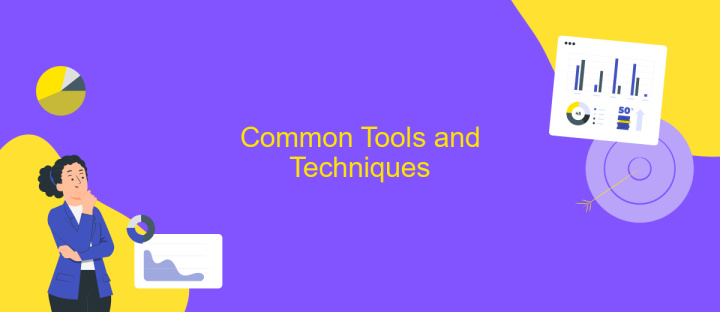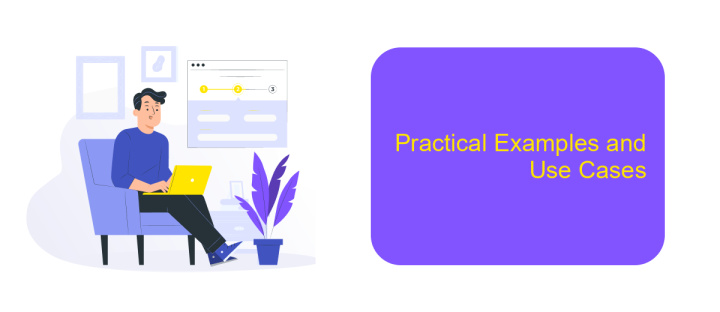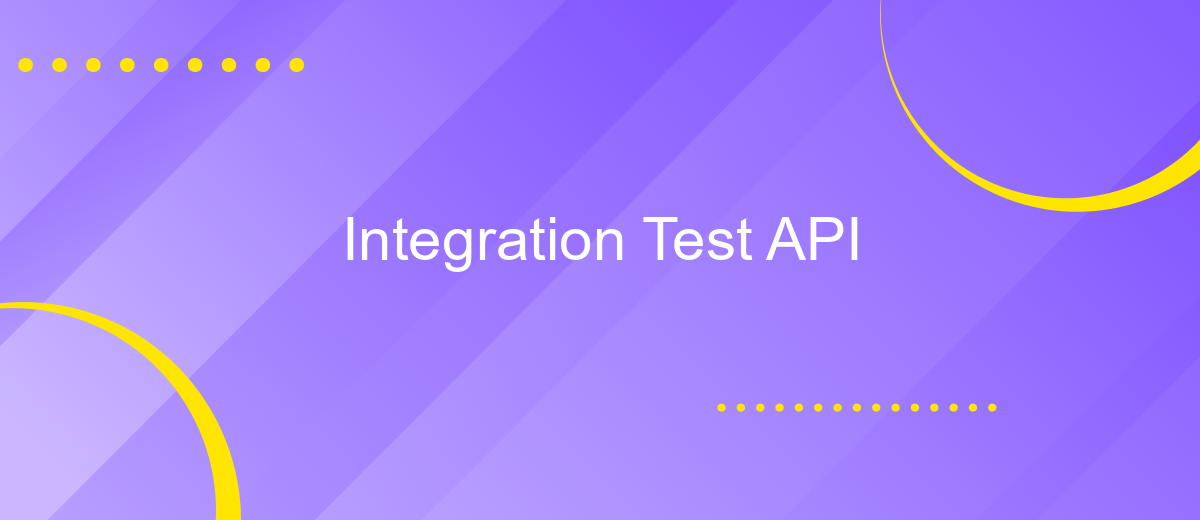Integration Test API
Integration testing for APIs is a crucial step in the software development lifecycle, ensuring that different modules or services work together seamlessly. This process verifies the interactions between various components, detecting issues that unit tests might overlook. By simulating real-world scenarios, integration tests help developers identify and resolve potential problems early, enhancing the reliability and performance of the final product. In this article, we explore best practices and tools for effective API integration testing.
Introduction to API Integration Testing
API integration testing is a critical aspect of software development that ensures the seamless operation of different software systems. It involves testing the interaction between different APIs to ensure they work together as expected. This type of testing is essential for identifying issues that may arise when APIs are integrated, such as data mismatches, connectivity problems, or unexpected behaviors. By performing API integration testing, developers can guarantee that their applications will function correctly in real-world environments, where multiple systems need to communicate effectively.
- Verifies the correct exchange of data between API endpoints.
- Ensures compatibility between different software components.
- Identifies issues related to performance and security.
- Facilitates early detection of bugs and inconsistencies.
- Enhances the reliability and robustness of the application.
In conclusion, API integration testing is indispensable for modern software development. It not only helps in validating the functionality of integrated systems but also enhances the overall quality of the software. By addressing potential issues early in the development process, teams can save time and resources, ultimately delivering a more reliable product. As applications continue to grow in complexity, the role of API integration testing becomes increasingly vital.
Key Concepts and Considerations

Integration testing for APIs is a critical phase in the software development lifecycle, focusing on verifying that different software modules or services interact correctly. It ensures that APIs function as expected when integrated with other systems, providing reliable data exchange and seamless user experiences. Key considerations include understanding the API's functionality, dependencies, and the environment in which it operates. It is essential to define clear test cases and scenarios that cover both typical and edge-case interactions, ensuring comprehensive coverage of potential integration issues.
When setting up integration tests, tools like ApiX-Drive can be invaluable. This service simplifies the process by allowing seamless connections between different applications, reducing the complexity of manual configurations. ApiX-Drive offers a user-friendly interface to automate workflows and data transfers, ensuring that integration tests are conducted efficiently and effectively. By leveraging such services, teams can focus on validating the core functionality of their APIs, ensuring robust and reliable integrations that meet business requirements and enhance system interoperability.
Common Tools and Techniques

When conducting integration tests for APIs, selecting the right tools and techniques is crucial for ensuring seamless functionality and reliability. Integration testing focuses on verifying the interactions between different modules or services, making it essential to employ efficient testing strategies and tools that facilitate this process.
- Postman: A popular tool for API testing, Postman allows testers to create, execute, and manage API requests with ease, providing detailed insights into API behavior.
- SoapUI: Known for its comprehensive testing capabilities, SoapUI supports both REST and SOAP protocols, making it ideal for testing complex API integrations.
- JUnit/TestNG: These frameworks are widely used for unit and integration testing in Java applications, offering robust support for test automation and reporting.
- Mocking Tools: Tools like WireMock and Mockito help simulate API endpoints, allowing testers to validate API interactions without relying on actual services.
- Continuous Integration Tools: Platforms like Jenkins and Travis CI enable automated testing and integration, ensuring that APIs are tested continuously throughout the development lifecycle.
Utilizing these tools and techniques not only streamlines the integration testing process but also enhances the overall quality of API services. By automating tests and simulating real-world scenarios, developers can identify and address potential issues early in the development cycle, leading to more robust and reliable software.
Practical Examples and Use Cases

Integration testing for APIs is a critical step in ensuring that different software components work together seamlessly. By simulating real-world scenarios, developers can identify and fix issues that might not be apparent during unit testing. This approach helps in validating the interactions between various modules and external systems, ensuring that data flows correctly and operations are executed as expected.
One practical example of integration testing for APIs is in e-commerce platforms. Here, APIs connect various services like payment gateways, inventory management, and user authentication. Testing these integrations ensures that when a customer makes a purchase, the payment is processed correctly, the inventory is updated in real-time, and the user's account reflects the transaction.
- Testing API interactions in microservices architecture to ensure seamless data exchange.
- Validating third-party API integrations, such as social media logins or payment services.
- Ensuring compatibility and data consistency across different API versions.
Through comprehensive integration testing, businesses can enhance the reliability and performance of their applications. This not only improves user satisfaction but also reduces the risk of failures in production environments, ultimately leading to more robust and scalable systems.


Best Practices and Troubleshooting
When conducting integration tests for APIs, it's crucial to establish a clear testing strategy. Begin by defining the scope and objectives of your tests to ensure they align with your project goals. Utilize automated testing tools to streamline the process and maintain consistency. Prioritize testing for critical API endpoints and functionalities that are essential for your application. Leverage version control and continuous integration systems to manage and execute tests efficiently. Consider using services like ApiX-Drive to simplify the integration process, as they offer robust solutions for connecting different APIs seamlessly.
Troubleshooting API integration issues often involves identifying the root cause of failures. Start by checking the API documentation for any updates or changes that might affect your tests. Log and monitor API requests and responses to gather insights into potential issues. Ensure that your test environment replicates the production environment as closely as possible to avoid discrepancies. If problems persist, isolate the problematic components and test them individually. Engaging with the community or support forums can also provide valuable insights and solutions. Remember, thorough documentation and clear communication with your team are key to resolving integration challenges effectively.
FAQ
What is an Integration Test API?
Why is Integration Testing important?
How can I automate Integration Testing?
What challenges might I face during Integration Testing?
How does ApiX-Drive facilitate Integration Testing?
Strive to take your business to the next level, achieve your goals faster and more efficiently? Apix-Drive is your reliable assistant for these tasks. An online service and application connector will help you automate key business processes and get rid of the routine. You and your employees will free up time for important core tasks. Try Apix-Drive features for free to see the effectiveness of the online connector for yourself.

